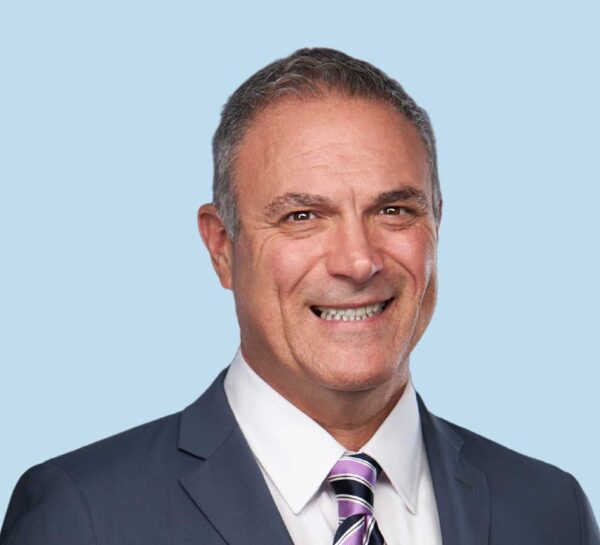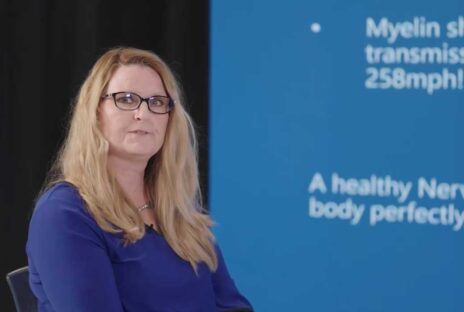Chiropractic care from orthopedic specialists
Chiropractic treatment for musculoskeletal pain
The Florida Orthopaedic Institute’s Division of Chiropractic Medicine includes a unique approach to the functional application of neurology and orthopedics. Our chiropractors are medical professionals who diagnose and treat disorders of the musculoskeletal and nervous systems, specializing in noninvasive (nonsurgical) pain management and restoration of skeletal function by utilizing manual medicine and chiropractic techniques.

Learn more about
Common chiropractic conditions
Working in collaboration with our medical and surgical teams, FOI chiropractors give special attention to the physiological and biochemical aspects of the body, including structural, spinal, musculoskeletal, neurological, vascular, and nutritional relationships. Chiropractic treatments include drug and surgery-free options effective in treating and preventing the following conditions:
- Arthritis Pain
- Back & Neck Pain
- Body Pain
- Foot & Ankle Pain
- Headaches
- Hip & Thigh Pain
- Intervertebral Disc Syndromes
- Knee & Leg Pain
- Muscle Aches & Tension
- Musculoskeletal Disorders
- Nervous System Disorders
- Pre & Post Surgical Cases
- Sciatica
- Shoulder Pain
- Sports Injuries
When to consider chiropractic treatment
Chiropractic treatment is an alternative medicine where practitioners treat patients as a whole – not one specific ailment or group of symptoms. If you need noninvasive, drug-free healing for any part of your musculoskeletal system, chiropractic care may provide relief.
Persons of all ages have received and benefited from chiropractic treatment. It is most commonly used by those between the ages of 45 and 64, however, chiropractic techniques are performed on patients in their teens and even into their 80s. It is also commonly used by individuals seeking natural healing methods who wish to refrain from investing in or using many medications.
Chiropractic care
Experience results-driven, non-invasive pain relief through a combination of functional and manual medicine with traditional orthopedics.
Your first visit
Your first chiropractic appointment is divided into several stages:
- Initial consultation – Your doctor will ask you about your lifestyle habits and medical history, including prescription and over-the-counter drug use, nutrition, sleep patterns, stress levels and your desired outcomes. The following questions may come up:
- Do you regularly use any over-the-counter or prescription drugs?
- Have you been diagnosed with any medical conditions or physical injuries?
- Do you use illicit drugs or alcohol?
- What does your diet consist of?
- How much exercise do you routinely get?
- How much stress do you deal with?
- Do you get enough restful sleep?
- Physical evaluation – Your chiropractor will ask you to perform specific movements to gauge how you walk, determine your flexibility, test your reflexes and measure your muscles and soft tissue strength.
- Treatment – Typically, you will lie on a long table while your chiropractor manipulates the part of your body requiring a chiropractic adjustment, using pressure to realign your spine and reduce pain and discomfort. Though you might hear popping or unusual sounds during this process, you should experience little to no pain. Your chiropractor may also offer massage or apply a heat or cold application. Soreness may develop several hours following treatment. The discomfort is usually mild and lessens in a day or two.
- Post-treatment – Your chiropractor may suggest dietary and exercise practices you can continue independently. You will likely schedule follow-up appointments lasting several weeks, potentially several times per week. Treatment frequency and duration are specific to the patient’s condition and response to techniques.
The Orthopaedic Total Wellness Program
Your chiropractor may recommend your participation in FOI’s Orthopaedic Total Wellness program, an integrative solution including:
- Nonsurgical and drugless conservative care
- Anatomically-based functional diagnosis of the patient’s condition
- Identification of diagnosis and referral to an internal specialist, if applicable
- Education associated with the prevention of condition recurrence
- Seamless continuum of care between physical therapy and orthopedics
- Early detection of orthopedic dysfunction within the body
- Long-term drugless pain management
“Dr. Derr has helped me exercise and clean my house again without severe back and neck pain. She explained more to me about my spine than any chiropractor ever has, and I am a regular chiropractic patient! Thank you, Dr. Derr, for helping me have a better quality of life again!” Patient | Chiropractic Services





